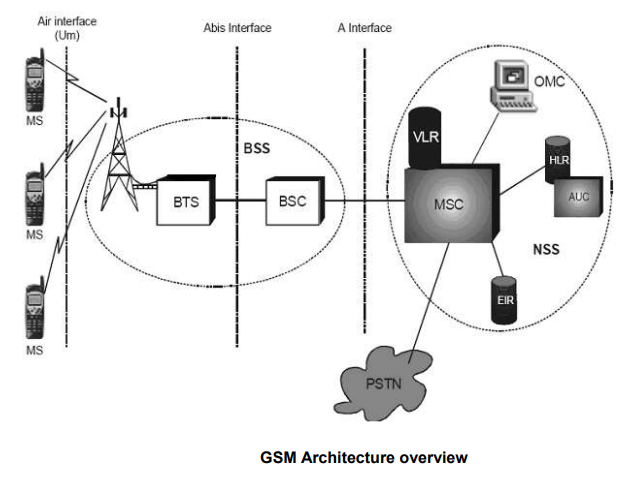GSM(Global System for Mobile Communication)
GSM is the most popular standard for mobile phones in the world. GSM (Global System for Mobile communication) is a digital mobile telephony system that is widely used in Europe and other parts of the world. In 1982, the European Conference of Postal and Telecommunications Administrations (CEPT) created the Groupe Spécial Mobile (GSM) to develop a standard for a mobile telephone system that could be used across Europe. In 1989, GSM responsibility was transferred to the European Telecommunications Standards Institute (ETSI) and phase I of the GSM specifications were published in 1990.
The first GSM network was launched in 1991 by Radiolinja in Finland with joint technical
infrastructure maintenance from Ericsson. The proposed GSM system had to meet
certain business objectives:
1. Support for International Roaming
2. Good Speech Quality
3. Ability to support handheld terminals
4. Low terminal and service cost.
5. Spectral Efficiency
GSM uses a combination of FDMA and TDMA. The GSM system has an allocation of
50 MHz bandwidth in the 900 MHz frequency band. Using FMA, this band is divided into
124 channels each with a carrier bandwidth of 200 KHz. Using TDMA, each of these
channels is further divided into 8 time slots. Therefore with combination of FDMA and
TDMA we can realize a maximum of 992 channels for transmit and receive.
Cell: Cell is the basic service area: one BTS covers one cell. Each cell is given a
Cell Global Identity (CGI), a number that uniquely identifies the cell.
Location Area: A group of cells form a Location Area. This is the area that is paged
when a subscriber gets an incoming call. Each Location Area is assigned a Location
Area Identity (LAI). Each Location Area is served by one or more BSCs.
GSM Architecture


Leave Comment